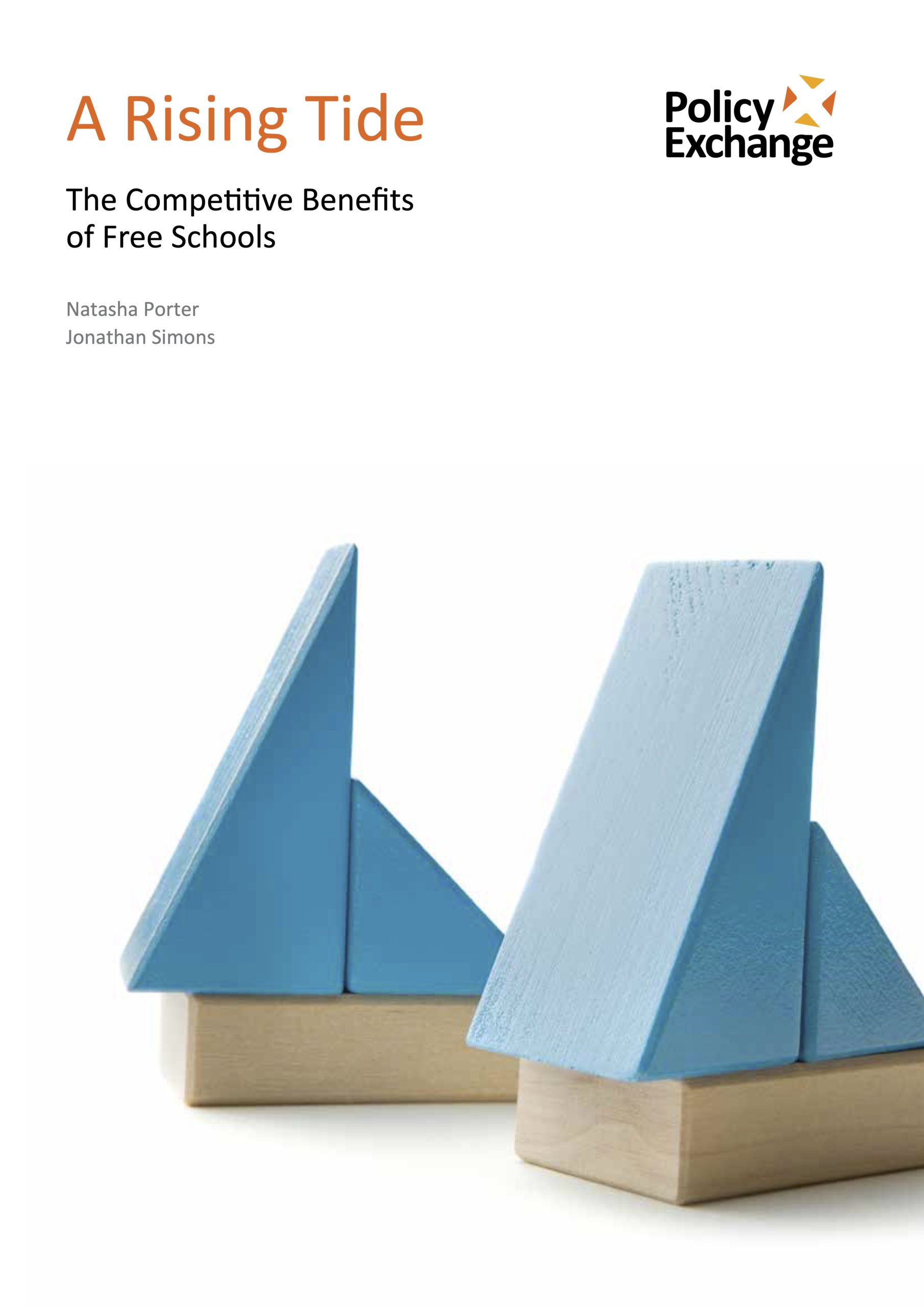
A Rising Tide: The Competitive Benefits of Free Schools
Free Schools are raising standards for other pupils across the local community, especially in some of the poorest performing schools, as well for the pupils who attend them. A Rising Tide sets out for the first time detailed analysis on the performance of local schools where a Free School has opened.
The paper finds that competition is driving up standards at both primary and secondary level. It says that contrary to some of the criticisms levelled at Free Schools, they do not drag down the results of neighbouring schools – but rather, they improve them. This undermines one of the key criticisms of opponents of Free Schools over the last five years.
The analysis is based on comparing the three geographically closest similar schools within the same Local Authority to each of the 171 mainstream primary and secondary free schools open so far. It uses increases in the primary and secondary headline measures of % of pupils achieving level 4 at key stage 2 and 5 of pupils achieving 5 GCSEs A*-C before and after a Free School is announced or opened near to them as the metrics for comparison.
The research found:
- The competitive effect created by a Free School leads to improved academic standards in nearby underperforming schools. In every year apart from 2010, the opening of a Free School is associated with substantial improvements of the lowest performing primary schools nearby. At secondary level, the opening of a Free School is associated with improvements for all secondary schools with below average results.
- Competition leads to bigger gains in higher poverty schools and schools with empty places. Primary schools with surplus places show a bigger increase in results than schools which are oversubscribed in every year apart from those approved in 2013. High poverty primary schools which have a Free School next to them improve faster than more affluent primary schools.
The research also found that concerns Free Schools would damage other schools are untrue:
- Free schools do not drag down overall results of local schools. In total, schools closest to Free Schools perform in line with national results at primary and better than either their Local Authority or national average at secondary.
- Free schools are not unpopular with local parents. Although some Free Schools are not full when they open, they fill quickly in subsequent years. In 2014 Free Schools had an average of 2.7 applicants for every place.
- Free Schools are not taking money away from where schools are needed. Between 2010 and 2015 they have contributed to alleviating basic need in many Local Authorities. Nearly three quarters (72%) of all open or approved mainstream free schools are in areas with a projected lack of places in the future.
- Free Schools are not dominated by the middle class. They are 8 times more likely to be located in the most deprived areas of England than the most affluent.
The research concludes that there is no justification for just restricting Free Schools to areas where there is a need for new schools:
- Free Schools can and should continue to play a role in alleviating basic need – as they have done since 2010.
- However, areas where there is a need for a new school, despite being no richer, are actually higher performing overall – particularly for the poorest children. Limiting Free Schools to such areas would therefore limit the ability of Free Schools to raise standards in underperforming areas.
- Restricting Free Schools in this way would deny the option of a new school to around 2 million children across the country who are currently being educated in below average schools but where there are surplus places – caused by parents educating their children elsewhere and leaving spaces in these unwanted local schools.
- Instead, communities across the country should be supported to have real choice and to be allowed to set up new schools wherever they wish to have one and where they can provide a high quality plan for doing so.
The report sets out a number of recommendations for how free schools can grow and expand to provide real choice to parents:
- There should continue to be one process for opening schools where they are needed (known as meeting basic need) and one process for setting up new Free Schools. New free school groups should continue to be approved centrally to avoid conflicts of interest amongst local commissioners.
- Existing Free Schools and Academies that want to set up new Free Schools in underperforming educational areas should be eligible for expansion grants.
- The planning system should be further amended to give a swifter ruling over which buildings can be used for new schools in areas of educational underperformance.
- Free Schools should be given the absolute first priority (ahead of NHS or housing) when disposing of public sector land in areas of educational underperformance.
Impact
Prime Minister David Cameron cited the report in his speech on Free Schools on 9 March:
“What these schools have achieved is, frankly, remarkable. They’re more likely to be good or outstanding.
“In fact, free schools are twice as likely to be judged ‘outstanding’ as other schools inspected at the same time. And, remember, they’ve only been going for a couple of years at most.
“And As Policy Exchange said this week, free schools don’t just raise the performance of their own pupils – they raise standards in surrounding schools in the area too.”
The report was also praised in a leader column in The Times
“Scepticism is inevitable when a think-tank founded by Mr Gove delivers the sort of verdict he would have wanted on a policy he cherishes. But it is a measured judgment based on real data and far more valuable than the early doom-mongering on free schools, which was based on little more than prejudice.”


